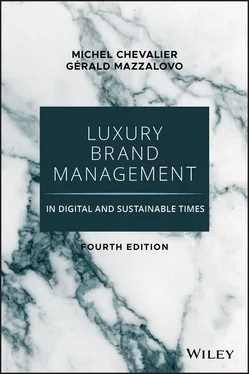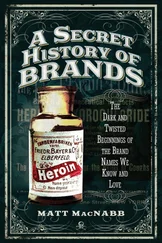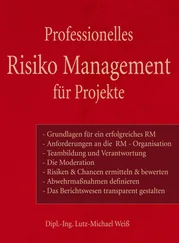There are diverse means by which luxury is distinguished: the natural, the original, the exceptional, the referential, and the authority, suggest Gilmore and Pine. But other ways can be mentioned: lifestyles, cultures, know-how (such as very high quality crafts), and technologies (e.g., it just went bankrupt the American manufacturer Tesla Motors, which aspires to become a luxury brand of electric automobiles) are all potential sources to establish true luxury brands … as long as they offer us extraordinary and exceptional experiences and continue to make us dream.
And finally, luxury is anthropological. It is a constant and natural hedonistic research of human beings of all time.
1 1 It is a question we find in Platon's Hippias Major and extensively studied by Kant and Hegel.
2 2 Theodor Adorno, Äesthetische Theorie, translated by Marc Jimenez. Paris: Klincksieck, 1982.
3 3 Jean de La Fontaine, Les Amours de Psyché et de Cupidon, 1669.
4 4 Pierre Nicole, De l'Éducation du Prince, 1670.
5 5Morand, L'homme pressé, 1941.
6 6Regards sur monde act, 1931.
7 7 Dana Thomas, Deluxe: How Luxury Lost Its Luster. Penguin, 2008.
8 8 Pierre Bourdieu, La distinction et Critique sociale du jugement. Minuit, 1979.
9 9 Thorstein Veblen, The Theory of the Leisure Class. The MacMillan Company, 1899.
10 10 Jean Baudrillard, Pour une critique de l'économie du signe. Gallimard, 1972.
11 11 G. Lipovetsky and E. Roux Le luxe Eternel. Gallimard, 2003.
12 12 Baudrillard, Pour une critique de l'économie du signe.
13 13 J.-N. Kapferer, “Why Are We Seduced by Luxury Brands?,” Journal of Brand Management 6, no. 1 (1998): 44–49.
14 14 F. Vigneron and L. W. Johnson, “A Review and a Conceptual Framework of Prestige-Seeking Consumer Behavior,” Academy of Marketing Science Review 3, no. 1 (1999): 1–15.
15 15 B. Dubois, G. Laurent, and S. Czellar, “Consumer Rapport to Luxury: Analyzing Complex and Ambivalent Attitudes,” HEC Research Papers Series 736. HEC Paris, 2001.
16 16 J.-K. Huysmans, À Rebours. Charpentier, 1884.
17 17 G. Perec, Les Choses. Julliard, 1965.
18 18 Suzy Menkes, “Coach Gallops into Europe,” International Herald Tribune, November 1, 2010.
19 19 J.-M. Floch and E. Roux, “Gérer l'ingérable: La contradiction interne à toute maison de luxe,” Décisions Marketing 9 (1996): 15–23.
20 20 O. Lallement, Caractérisation des éléments spécifiques de la marque de luxe dans l'esprit du consommateur. Une étude des images mentales associées a un visuel publicitaire. IAE Montpellier, 2000.
21 21 J. H. Gilmore and B. J. Pine II, Authenticity: What Consumers Really Want. Harvard Business School Press, 2007.
22 22 Elizabeth Paton, “Pierre Bergé on Luxury, Morocco and Hedi Slimane,” New York Times, October 28, 2015. http://www.nytimes.com/2015/10/29/fashion/pierre-berge-on-luxury-morocco-and-hedi-slimane.html?_r=0.
23 23 Y. Michaud, Le nouveau luxe: Experiences, arrogance, authenticité. Paris: Stock, 2013.
24 24 R. Barthes R. “Réthorique de l'image,” Communications 4, no. 4 (1964): 40–51.
25 25 J. Baudrillard, Le système des objets. Paris: Gallimard, 1978.
26 26 W. Benjamin, La obra de arte en la época de la reproductibilidad técnica. Madrid: Taurus, 1936.
27 27 J. Lozano, Semiótica del (nuevo) lujo. Entre lo exclusivo y lo excepcional, in Documentos del presente. Una mirada semiótica (Jorge Lozano y Miguel Martín coord.). Madrid: Lengua de Trapo, 2018.
28 28 Michaud, Le nouveau luxe.
Chapter 2 Specificities of the Luxury Industry
Representatives of any business sector are usually eager to assert that their business is different from any other, but managers working in the luxury industry are possibly the only ones who are justified in claiming so. The luxury sector really is different. This is due partly to the amount of creative talent needed for a luxury brand to be successful, and partly to the very different way in which a luxury brand with a worldwide market needs to be run. Three major differences will be identified below. We will then briefly examine the major requirements for success in this business and conclude by identifying the main companies operating in this field.
What Is So Different About the Luxury Industry?
The three major differences between the luxury industry and the non-luxury segment are company size, financial characteristics, and the time factor.
In almost every business, size is a major—if not the most important—element in comparing firms or industries. But in the luxury world, size doesn't seem to matter that much. In general, luxury businesses are small, but they are respected and have impressive reputations. Dior Fashion had annual sales of approximately €3,500 million in 2019, while the Peugeot Group had annual sales of €74 billion—so, in fact, Peugeot is 20 times bigger than Dior Fashion. General Motors had sales of around €135 billion, 40 times those of Dior Fashion. The number of employees in each case is probably in the same ratio, if not higher.
But if you were to ask an American, Japanese, or Chinese consumer to name a French product or a French company, they would name Dior before Peugeot. This can be explained by brand awareness: the Dior brand is better known, worldwide, than the Peugeot brand. And this very high awareness comes from the fact that consumers have a genuine interest in luxury and fashion brands. They read about them in magazines and want to know more about them.
LVMH, the luxury-goods giant with a portfolio of more than 70 brands, had total annual sales of approximately €54 billion in 2019. Compare this with Zara Inditex, with €28 billion, or Gap, with €15. In other words, the average LVMH brand—which incorporates some of the most powerful brands in the luxury industry—is about 20 times smaller than Zara or Gap, and the biggest brand in the portfolio of LVMH is probably smaller than Zara or Gap.
We can conclude, therefore, that luxury brands are rather small but with very strong awareness among consumers. So, despite their prestigious image and their advertising presence all over the world, luxury companies are generally small to medium-sized enterprises (the exceptions being the larger conglomerates of small individual firms). Some companies are very small. Cardin has worldwide annual sales of only €10 million, and Carven has sales of around €5–10 million. This is much smaller than a Volkswagen dealership in Athens or a small group of five supermarkets in Birmingham. But, of course, Cardin and Carven remain worldwide brands.
How do such relatively small businesses achieve such a strong presence in the mind of the consumer?
Sales Figures Are Difficult to Compare
In the luxury industry, comparing levels of sales across companies can be like trying to compare apples with oranges, as corporate figures may comprise very different elements. If we take the sales figures for Louis Vuitton, things are relatively simple because they include sales in the group's 450 stores worldwide. But Carven's sales figures, for example, reflect retail sales at its stores, ready-to-wear sales at wholesale outlets and department stores, export sales, and revenues from licenses given to outside enterprises. As a rule of thumb, wholesale sales are approximately half of retail sales, export sales are generally 20% of retail sales, and license royalties amount in general to 10% of billings, which can in turn come from retail, wholesale, and export sales. Thus, it just doesn't make sense to compare the two companies in terms of their sales figures.
To compare the power of two brands, one would have to multiply part of the activity by a coefficient to account for differences in export sales and wholesale sales, for example, so that everything would be computed as a final retail sales amount. But this would still be misleading, because a brand developing essentially through license agreements will be weaker than a brand that controls 100% of its activities at retail. Also, in most cases, the split between retail, wholesale, export, and license royalties isn't given, so assumptions are difficult to make.
Читать дальше












